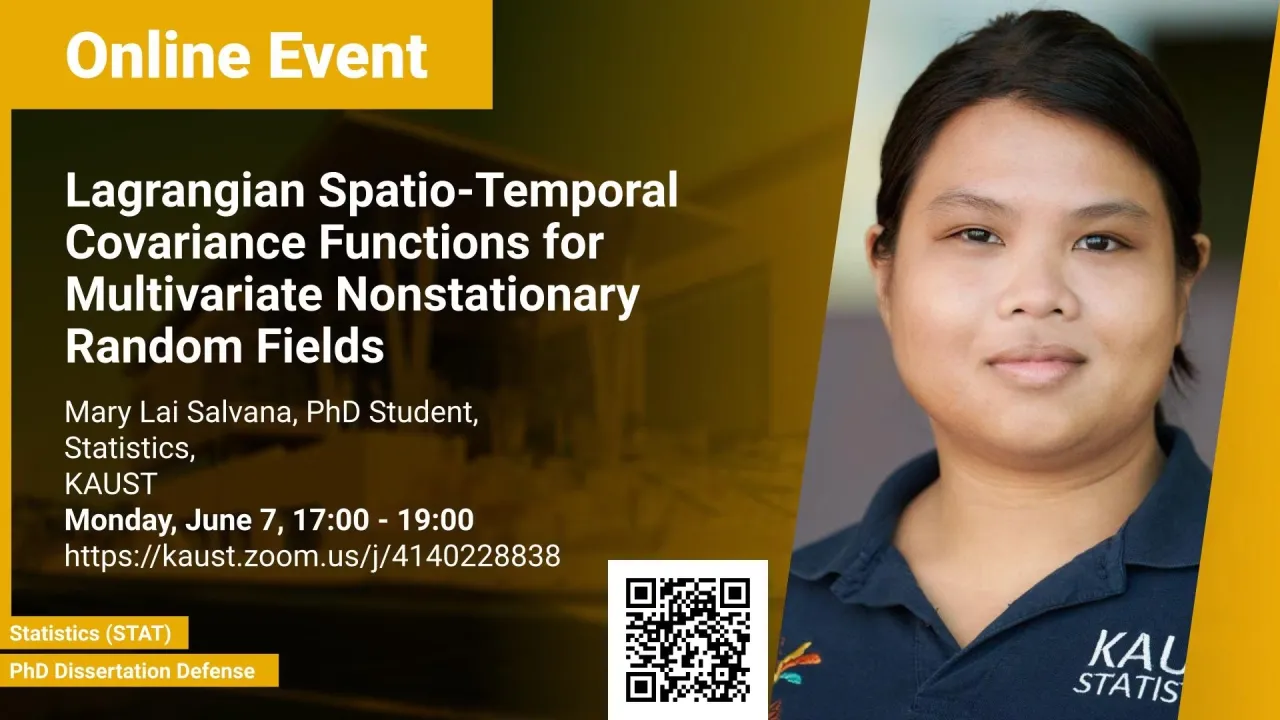
Lagrangian Spatio-Temporal Covariance Functions for Multivariate Nonstationary Random Fields
In geostatistical analysis, we are faced with the formidable challenge of specifying a valid spatio-temporal covariance function, either directly or through the construction of processes. This task is difficult as these functions should yield positive definite covariance matrices. In recent years, we have seen a flourishing of methods and theories on constructing spatio-temporal covariance functions satisfying the positive definiteness requirement. The current state-of-the-art when modeling environmental processes are those that embed the associated physical laws of the system. The class of Lagrangian spatio-temporal covariance functions fulfills this requirement. Moreover, this class possesses the allure that they turn already established purely spatial covariance functions into spatio-temporal covariance functions by a direct application of the concept of Lagrangian reference frame. In this dissertation, several developments are proposed and new features are provided to this special class.
Overview
Abstract
In geostatistical analysis, we are faced with the formidable challenge of specifying a valid spatio-temporal covariance function, either directly or through the construction of processes. This task is difficult as these functions should yield positive definite covariance matrices. In recent years, we have seen a flourishing of methods and theories on constructing spatio-temporal covariance functions satisfying the positive definiteness requirement. The current state-of-the-art when modeling environmental processes are those that embed the associated physical laws of the system. The class of Lagrangian spatio-temporal covariance functions fulfills this requirement. Moreover, this class possesses the allure that they turn already established purely spatial covariance functions into spatio-temporal covariance functions by a direct application of the concept of Lagrangian reference frame. In this dissertation, several developments are proposed and new features are provided to this special class. First, the application of the Lagrangian reference frame on transported purely spatial random fields with second-order nonstationarity is explored, an appropriate estimation methodology is proposed, and the consequences of model misspecification is tackled. Furthermore, the new Lagrangian models and the new estimation technique are used to analyze particulate matter concentrations over Saudi Arabia. Second, a multivariate version of the Lagrangian framework is established, catering to both second-order stationary and nonstationary spatio-temporal random fields. The capabilities of the Lagrangian spatio-temporal cross-covariance functions are demonstrated on a bivariate reanalysis climate model output dataset previously analyzed using purely spatial covariance functions. Lastly, the class of Lagrangian spatio-temporal cross-covariance functions with multiple transport behaviors is presented, its properties are explored, and its use is demonstrated on a bivariate pollutant dataset of particulate matter in Saudi Arabia. Moreover, the importance of accounting for multiple transport behaviors is discussed and validated via numerical experiments. Together, these three extensions to the Lagrangian framework makes it a more viable geostatistical approach in modeling realistic transport scenarios.
Brief Biography
Mary Lai Salvaña is a PhD student in the Spatio-Temporal Statistics & Data Science group at King Abdullah University of Science and Technology (KAUST). She received her BS and MS degrees in Applied Mathematics in 2015 and 2016 from Ateneo de Manila University, Philippines. Her research interest includes multivariate spatio-temporal statistics and high performance computing for large spatial and spatio-temporal datasets.